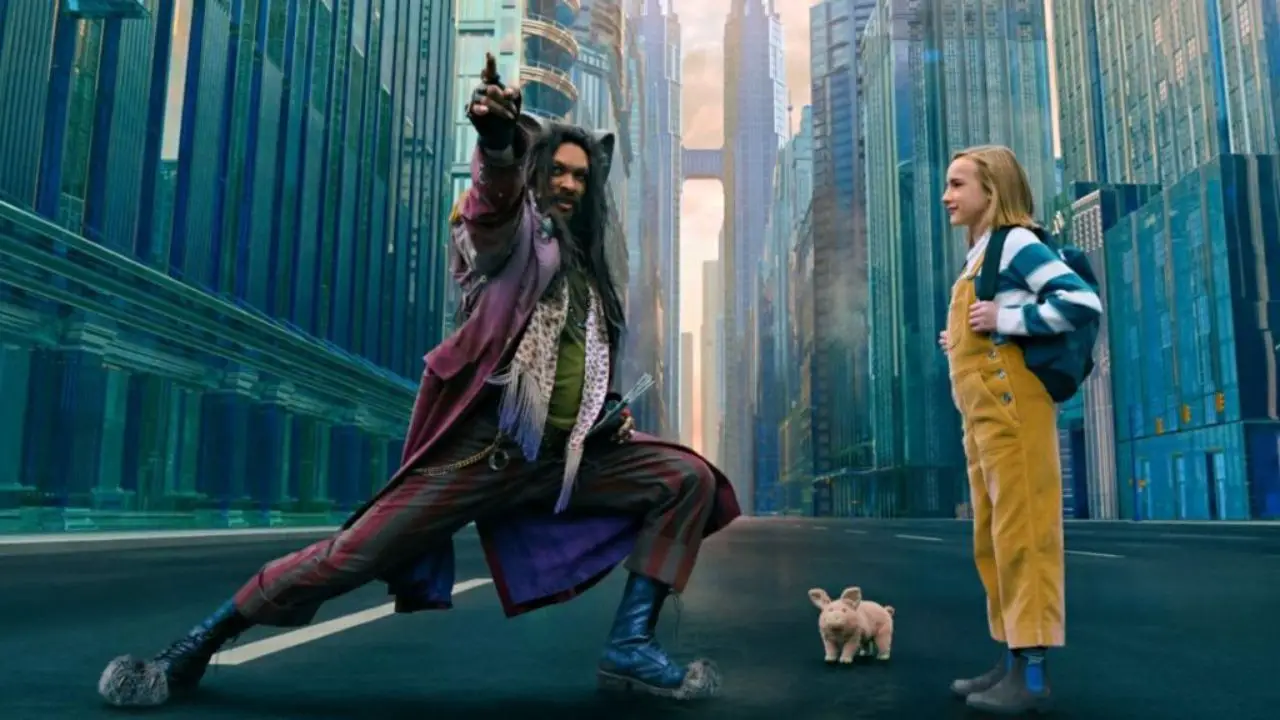Yes, Slumberland on Netflix is based on Little Nemo: Adventures in Slumberland. While the story is the same, the Netflix movie has some of its own original stories as well.
Slumberland, directed by Francis Lawrence, is a Netflix fancy adventure film. The plot revolves around Nemo (Marlow Barkley), an 11-year-old girl who lives on a small island with her father, the lighthouse keeper Peter (Kyle Chandler). Nemo is content with her isolated life there. However, tragedy strikes when her father is killed in a storm.
Nemo is forced to leave her childhood home and relocate to the city to live with her estranged uncle, Philip (Chris O'Dowd). When she dreams again, she returns to her island and meets Flip (Jason Momoa), a self-proclaimed outlaw who accompanied her father on all of his adventures through Slumberland, or the world of dreams.
Since the show hit the stream, one of the first questions people ask about the new film is whether or not it is adapted from an existing book or comic titled Little Nemo. So, does Slumberland simply follow the plot of the Little Nemo comic, or does it take a different route? Here's what we know so far.
Yes, Slumberland Is Based on Little Nemo: However, the Plot Has Some of Its Own Original/Different Content!
Yes, Netflix's fancy adventure film, Slumberland, directed by Francis Lawrence is related to a script written by screenwriters David Guion and Michael Handelman. And the script is based on the comic strip Little Nemo in Slumberland, created by American artist and cartoonist Winsor McCay in the early twentieth century.
However, the movie isn't an exact remake of the original Little Nemo comic, but the story is similar where Nemo a young child fantasizes about Slumberland, a magical world full of adventures.
Nemo was gender-swapped for the Netflix movie, and the added backstory with her father emphasized why Nemo felt the need to escape to a magical world far different from her dreary one, a reality in which her father was no longer there for her.
As a result, it's fairly safe to assume that considerable creative license was exercised during the adaptation process. In McCay's original work, Nemo is a boy, and Flip is a green, cigar-chomping clown. Nemo first appeared in another McCay comic strip, 'Dream of the Rarebit Fiend,' before his creator launched the spin-off 'Little Nemo in Slumberland.
Before waking up in the last panel of the weekly comic strip, Nemo has a variety of dreams. When it ran in William Randolph Hearst's New York American between 1911 and 1914, the strip was briefly renamed 'In the Land of Wonderful Dream.' It was first published in the New York Herald under its original title from 1905 to 1911, and then again from 1924 to 1927."
At the time of the strip's initial publication, Winsor's original Little Nemo comic illustrations were considered groundbreaking. The illustrator would manipulate the proportions of a standard comic strip to match what Little Nemo was experiencing in Slumberland, almost as if the Little Nemo comics were experimenting with a reader's 3D immersive experience before it was cool! In 1989, another Japanese-American animated film adaptation of Little Nemo: Adventures in Slumberland was released.
In an interview with Screen Rant, Lawrence discussed the visual elements he drew from the original comic strip. Later, the director stated,
Honestly, not that many. It was more of a springboard for the development of the story and the screenplay idea. But, rather than simply returning to the comic strip, when we were creating the dreams that our characters were passing through, we tried to find dreams that felt very different from one another in order to create a character of the dreamer themselves and build the world out that way.
Is Slumberland Related to Finding Nemo?
Slumberland's Nemo is named after the titular character in Pixar's 2003 film Finding Nemo. Some of you may be wondering if the two projects are related. After all, Little Nemo in Slumberland is a classic comic that has influenced generations of artists. So it's reasonable to speculate that Winsor McCay's work influenced 'Finding Nemo.'
The important thing to remember here is that the name Nemo predates 'McCay's works. It made its most notable appearance in Jules Verne's Twenty Thousand Leagues Under the Sea, which was first published in book form in 1870. In the novel, Nemo is an Indian prince who serves as the captain of the Nautilus, a fictional submarine. Nemo also appears in Jules Verne's 1875 novel The Mysterious Island, as well as his 1882 play Journey Through the Impossible, which he co-wrote with Adolphe d'Ennery.
Regarding the character of Nemo in Finding Nemo, director Andrew Stanton mentioned a photograph he saw of two clownfish hiding in an anemone. He said,
It was so arresting, I had no idea what kind of fish they were, but I couldn’t take my eyes off them. And as an entertainer, the fact that they were called clownfish—it was perfect. There’s almost nothing more appealing than these little fish that want to play peekaboo with you.
Visit Celebs In-depth for more interesting stories about your favorite celebs.

